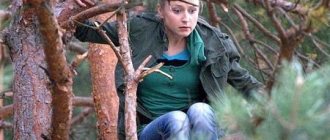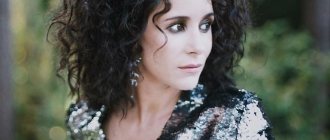The beginning of the sports journey
Olya studied “excellent” in primary school. In second grade, she was accepted into the school gymnastics section. There was no money for equipment, so my mother made slippers from a terry towel and a swimsuit from a long T-shirt. Later, at the age of ten, Olya went to a sports school with coach Renald Knysh. At first, he did not believe in the girl, who was too plump, in his opinion. But another coach, Knysh’s student, Elena Volchetskaya, an Olympic champion, saw something in Olya, and she was given a chance. Gradually, Renald Knysh came to appreciate the young gymnast. Among many girls, he was looking for the most capable one, from whom he could nurture a future champion. The coach was able to see huge potential in the small and nondescript Korbut.
In general, Olya and Renald Knysh formed a harmonious tandem: he is striving for novelty, taking risks, stubborn, uncompromising, she is also stubborn, talented, flexible, very efficient, strong in body and spirit, wanting to perform and amaze the public. Simply created for gymnastics! Later, in an interview, Olga Korbut will say that all the most important things in her life - both good and not so good - are connected with gymnastics.
Gymnastics
In 1965, Renald Knysh became the new coach of the young athlete. He immediately discerned in the girl a strong-willed character and undoubted talent in gymnastics. The coach tried to create something unusual and new in the sports community. He invented new elements and combinations and forced the young gymnast to perform them. This collaboration was difficult, not without resentment and tears. But the difficult training paid off - soon fame and success awaited Olga.
Now watching the athlete’s past performances on YouTube, fans are amazed at how complex Olga’s elements were. It is still considered the most complex and traumatic element.
They first started talking loudly about Olga when she was 14 years old. Then she took part in the “Olympic hopes” competition. In them, the athlete showed the judges a very difficult somersault on a balance beam. The performance created a real sensation. After that, Renald Knysh added several more difficult tricks to the athlete at an unusual pace, which gave Olga’s program new “colors”.
The girls were compared every now and then, highlighting the merits of both. In 1972, at the Olympics, Olga lost to Turishcheva, making a mistake in her signature difficult number. But this was an isolated mistake, because in her next competitions she always became a favorite among the judges and spectators.
In 1973, Olga, together with the Soviet Union national team, went on a long tour of America. Korbut was greeted very warmly abroad, calling her a Russian prima and a real petite beauty. The athlete's height is only 152 cm, and she herself has endless charm. The popularity of the Russian athlete reached its peak, and her photos could often be found in Soviet magazines.
Four years later, Knysh transfers his ward to another mentor. Olga Alekseeva becomes the new coach. The woman had a very sociable and kind character. Her sports methods were radically different from those to which Korbut was accustomed. Alekseeva became a true friend for the athlete, who always supported her in difficult life situations.
At 23, Korbut decides to leave his sports career. She will return to big-time sports a little later, but now as a coach in America. Many fans are interested not only in sports achievements, but also in who Olga Korbut’s husband is. More on this below.
Somersault on a log
Olga Korbut’s sports biography contains magnificent achievements. The athlete, together with her coach, developed her new, unusual, risky gymnastics. For the first time, Olga loudly declared herself by performing a somersault on a balance beam at a youth competition at the age of 14.
For several years, he and Renald Knysh persistently prepared this sensational element, but with varying degrees of success. Skeptics did not believe that the girl would be able to achieve stability in performing somersaults, and that she would be able to compete with this in international competitions. But they miscalculated: Olya exhausted herself with repetitions of a unique element, and everything began to work out.
First achievements
Olga first took part in serious competitions when she was 14 years old. At the “Olympic Hopes” competition, the young gymnast surprised everyone with a new unusual trick, “Somersault on a balance beam.” This is a very difficult trick that even the most experienced gymnast could not perform before. This movement became her signature and was named in her honor “Korbut Loop”. The personality of Olga Korbut began to be loudly discussed. At each subsequent competition, Olga showed more and more unique elements. It was as if she had opened up a world of new gymnastics with unusual, previously unknown tricks.
At that time, Korbut was often compared to Lyudmila Turishcheva. Both of them were very flexible and performed complex tricks, but Olga was considered a representative of the “new” gymnastics because of her unique tricks, while her opponent performed fairly standard tricks. At the Olympics in Munich, Olga still lost to Turishcheva, having made a serious mistake in one of her tricks. But the young athlete quickly corrected herself and received 3 gold medals in her next appearances at the Olympic Games.
Success at the Munich Olympics
Olga Korbut's first Olympics was approaching - in 1972 in the German city of Munich. The girl was 17 years old, the gymnast was in excellent athletic shape. Together with the coach, they prepared a unique program, full of new products and risky elements. The hour of Olga Korbut’s world triumph was approaching.
Petite (height - 152 cm), with perky ponytails tied with bright ribbons, flexible and plastic, with surprisingly clean and smooth lines, creating something stunning on gymnastics equipment, Olya created a sensation. And the world was especially struck by Korbut’s “dead loop”. Until now, no one has done such a risky element in women's artistic gymnastics. The girl stood on the top rail of the uneven bars and jumped into a back somersault, grabbed the top bar and then continued her beautiful combination at a fast pace. She moved so easily and smoothly, as if the force of gravity did not act on her.
The stands rejoiced. Olga landed accurately and firmly, straightened up triumphantly and lit up with a happy smile. In general, her smile is also a kind of calling card: wide, sincere, joyful, captivating.
Olya Korbut performed superbly both on the balance beam and in the floor exercise, receiving gold for both. A new composition for freestyle “Kalinka”, specially staged before the Olympics, demonstrated in all its splendor the girl’s magnificent acrobatics and her artistry.
But on the parallel bars she still lost to the German gymnast Karin Janz and became second. In the team competition, Olga received a gold medal, a total of three golds and one silver! An inspiring result for the Olympic debutante.
Olga Valentinovna Korbut
STUPID, COME OUT AND FIGHT!
I suspect that some kind of devil has been inside me since childhood. To strengthen her authority, she even decided to become a football player. There were no special hunters to stand at the gate, where a briefcase and a brick served as barbells, so every time I managed to get the coveted place in the yard team without any hassle. The goalkeeper's debut on the regional lists turned out to be difficult. The day and hour are set, and the teams run out into the middle of the vacant lot... And then the neighboring team starts laughing openly, and their captain, holding his stomach, declares: “We won’t play with girls. Let him go."
Puffed up, sticking out my chest, I barked: “You dunce, come out and fight!” I had some experience in this area, so our team took my challenge calmly. And they just hit it right. Their captain, for being a “boob,” however, was offended, became serious and threatened that he would make a steak out of me with his left hand. “You’re a coward, I suppose,” I objected, and the fight began. I jumped in circles until, finally, I managed to grab him by the scruff of the neck with a death grip.
He shook me off in every possible way, but I held on. In the end, the “judges” recorded a draw, and I took my place in the goal. We won that match.
ONLY THE PIN WON'T FAIL!
Before the first children's competition, the problem of equipment suddenly arose. At school we studied in tights and Czech shoes, but here we needed sports swimsuits and white slippers. After my passionate pleas, my mother brought a terry towel, cut out a blank from it, cast a spell with a needle, and the result was slippers, which, if desired, could be mistaken for gymnastics. The swimsuit was made in the same artisanal way. My mother cut a long closed T-shirt at the bottom, hemmed it, put it on me and pinned it at the bottom with a pin. Ready!
I can’t say how I performed, whether it was good or bad, because I was completely focused on the ill-fated pin. If only I didn’t let you down, my dear. Didn't disappoint!
I remember there were beautiful, thin girls with huge bows on the pedestal. I envied them with black envy and was ready to beat them for being so pretty.
YOU WILL SEE HOW GREAT IT IS TO OVERCOME YOURSELF
I was always afraid of the famous “Korbut loop”. Yes Yes Yes! Always, until the very last day in big sport, I approached the uneven bars - and my heart fell into the abyss of fear. The thought of escaping, ignominiously escaping to the hooting and whistling of the audience, always seemed to me quite reasonable and feasible. But my coach, Renald Knysh, taught me to keep my will in check. How did Ren teach you to kill fear? Every time there was a fall during training - even the most painful one, when the nose or knee was broken - he, having barely completed the procedures of calming down, lubricating with iodine and bandaging, categorically demanded to do again what had not worked out.
No tears, no complaints, no tricks were able to shake him, make him feel sorry for him, doubt him. “If you don’t do it now, you will never do it. Overcome fear and pain, you must overcome it, you will see how great it is to overcome yourself,” said Ren, pulling mats from all over the hall to the apparatus. And I went and overcame it.
THEY PUT A SMILE ON ME LIKE ANY GYMNASTIC ELEMENT
“I won’t be flirtatious, I admit: Ren gave me a smile with the same commitment as any gymnastic element. At the same time, the “production” took place exclusively during competitions; during training, I was free to do with my face as I wished: cry, laugh, frown... And at the official tournament, please, my dear Korbutiha, show me what you are capable of.
It was not a request - an order. Already standing on the platform, I looked around, looked for Knysh on the coaching bench and saw how he was in a hurry to catch the corners of his lips with his index fingers and stretch them to impossible limits. At this, Ren’s face acquired a fierce expression, and I, laughing internally, hurried to put on a smile. I don’t know how it turned out; no one brought a mirror to the projectile. But I couldn’t artificially recreate it retroactively outside the platform - I tried more than once. The grimace came out in the manner of Renov, like the wooden soldiers from the army of Oorfene Deuce.
WHAT SIREN, RENALD IVANOVICH?
In my life I have never met a person more courageous than Knysh. And I have never met him more cautiously. He furnished the new element with a dozen leading exercises. We started practicing the jump by moving aside... the gymnastics pommel horse. On the mats, he drew the outline of the upper plane of the projectile with chalk, pulled it to the edge of the pit with foam rubber (“Foam rubber made a revolution in gymnastics,” Knysh liked to say), and before that he invited me to jump on a trampoline for a month, hitting a given point. And I jumped - first onto the trampoline, then onto the mat and into the “pit”.
Many weeks passed, a thousand sweats drained from me, until I learned to automatically fall into the chalk contour while rotating. Injury, as we see, was excluded, and the only discussion was about the extent of diligence and perseverance.
A little later, when I got the hang of it, the trainer dragged the horse into the pit, covered the apparatus on all sides with a thick layer of foam rubber - only the top remained open - and we continued training. Gradually the horse climbed to the surface, and the jump took on its normal appearance. I remember how once, already at a competition, I performed a combination on a balance beam. Suddenly a siren sounded - the radio technicians had screwed up. She took a few more steps and fell. Ren ran up: “You’ll start over, the siren got in the way.” And I was surprised: “What siren, Renald Ivanovich?” I really didn’t hear and fell in the most ordinary way, out of touch with the signal. Complete self-care!
OL-GA! OL-GA!
In 1972, there was a fairy tale in Munich that lasted two weeks. I couldn’t believe it: am I an Olympic champion? Am I an Olympic champion?! Is it really true? Kisses, hugs, handshakes are endless. The policeman on duty respectfully bows his head and is not interested in where I once again touched my pass: “Bitte, Fräulein Korput.” The audience is indignant at the referees who dared to give me a ridiculous, in his opinion, 9.6 after a somersault on a balance beam. The competition ends, and I am carried out of the hall in my arms through a raging ocean of fans, splashing with a hoarse surf: “Ol-ha! Olga!
I opened the door of the room, turned on the light and froze in amazement: there was a continuous wall of flowers, letters and telegrams all around. I grabbed the letters and threw them towards the ceiling. A snowfall of envelopes, rustling and fluttering, scattered across the room. Long live gymnastics! Long live I!
The history of the “dead loop” by Olga Korbut
The athlete demonstrated this very risky unique element for the first time in 1969 at the USSR Championship.
How did the phenomenal Korbut “loop” appear, which later blew up the Olympic stands? Renald Knysh said that one day during training Olya was just playing around on the uneven bars and suddenly did something out of the ordinary. The coach immediately sensed the unusualness of what was performed and tried to reproduce the element performed in his memory. This is how Olga Korbut’s legendary “dead loop” was born, which took years to perfect.
In an interview, the gymnast said that she was always scared to death of this element and, before going to the uneven bars, she overcame a great desire to run away from the competition to the whistling and hooting of angry fans. But, of course, she went and performed her composition. Not once did she fall off or get injured while performing the “loop.”
The paradox is that during all the time she competed at international competitions, the gymnast did not win a single gold medal in the uneven bars exercises. All first places for this apparatus usually went to German athletes, and Olya was given the highest awards for exercises on the balance beam and floor. It's a shame, strange, but true.
Subsequently, Elena Mukhina repeated the “loop”, improving it (adding a screw). But one day Mukhina miscalculated something and during training, while repeating a treacherous element, she fell from the uneven bars, suffered a spinal fracture and lay paralyzed for 25 years. After this tragic incident, making a “dead loop” was prohibited. Now, according to the rules of artistic gymnastics, female athletes are not allowed to stand on the top rail of this apparatus.
"Korbut Loop"
The “Korbut Loop” is a free gymnastic trick – a backward jump with two legs. This element was performed for the first time by Olga, which is why it was named after her.
Olga worked on a unique exercise for 5 years together with coach Knysh. She demonstrated the loop in 1969 (14 years old) at the USSR Championship. The girl felt fear every time she performed a dangerous somersault.
In 1978, Elena Mukhina improved the risk element by adding a screw. Now the “Korbut Loop” is a prohibited technique in gymnastics, because The new rules do not allow competition participants to stand with their feet on the top of the sports equipment (uneven bars).
The reason for this was the unfortunate fall of the gymnast Mukhina in 1980 during preparation for the Olympic Games. The girl hit her head on the floor and broke her spine. The athlete was bedridden for 26 years.
After Olga showed her enchanting loop, clubs, schools, and gyms opened in the United States under the majestic surname Korbut. An interesting fact is the creation of documentary videos and feature films dedicated to the life and achievements of the majestic athlete (“Miracle with Pigtails” - 1974, “Korbut Loop” - 2007).
Stream of worldwide fame
After the Olympics in Munich, fame literally fell on young Olga. She was idolized by fans from different countries, and as soon as she came to a store abroad, they immediately gave her goods for free. She bought a wig and dark glasses, but this did not help at all to disguise herself - they still recognized her, approached her, and took autographs.
Soviet athletes traveled to different countries with demonstration performances, and people came to see, first of all, the “Russian little sparrow.” In the USA, 200 gyms were named after Olga Korbut and a boom in artistic gymnastics began.
Meeting between Korbut and the US President
Olga met with US President Richard Nixon. Subsequently, Russian diplomats admitted to her that she had accomplished in Soviet-American politics what they had failed to accomplish in 5 years. Olga talked to Nixon completely at ease.
Nixon said to Olga: “What a little girl,” to which she, not recognizing him, answered the tall Nixon in not very good English: “You are a big boy.” The laughter among those around did not stop for several minutes. Then the team was invited to dinner. There was a feeling of warmth in relations between the countries. It was after Olga’s visit to America and her meeting with President Nixon that he flew to the USSR in 1974 during the Cold War.
World Championships in Varna
At the World Championships in 1974 in Varna, Bulgaria, Olga felt in the best sports shape of her entire sports life. During the competition, the gymnast earned two gold (in team competitions and for vault) and four silver awards (all-around, uneven bars, beam, floor). In the all-around, Lyudmila Turishcheva, Korbut’s constant rival, won gold, and Olga felt the injustice of what was happening, because she showed beautiful, clean, innovative gymnastics and was in excellent shape.
And the audience was violently indignant when they saw little Korbut’s grades. But sport is sport, what can you do.
Victories in the USSR and the Olympics in Montreal
And further in Olga Korbut’s biography is victory in the Spartakiad of the Peoples of the USSR and the title of absolute champion of the USSR in 1975. In 1976 - the Olympic Games in Montreal, Canada. There Olga Valentinovna Korbut won a gold medal as part of the team and received silver for her performance on the balance beam. This seemingly not very victorious performance was due to the aggravation of a long-standing ankle injury, and in order not to leave the competition altogether, Olga and her coach had to simplify their program as much as possible, removing from it the most spectacular and dangerous elements that were stored in abundance.
Personal life
Gymnastics fans know the love story of Olga Korbut and her husband, lead singer of the Pesnyary group Leonid Bortkevich. The future spouses met in 1976 on a plane on which a team of athletes and a musical group were flying to the United States on tour.
The gymnast chatted with Leonid, who was married at that time, for 8 hours on end, and a year later, having learned about his first wife’s infidelity, Bortkevich decided to call his young fellow traveler while drunk. Olga rushed to his house, cleaned up, cooked dinner and left. In the evening of the next day, Lenya went to her hotel, and in the morning he told his mother by phone that he was getting married. Soon the couple decided to live together. After some time, the lovers got married.
Olga Korbut and Leonid Bortkevich with their son
While married, Korbut received a higher education (diploma in history). Olga often toured with her chosen one and dreamed of children. Years spent in a dangerous sport affected the girl’s health, but God sent the couple a son, Richard. The next child from Bortkevich, whom the parents wanted to name Vanechka, was stillborn.
Pensions in the USSR paid to athletes at that time were meager. Olga regularly received invitations from America, but could not obtain permission to leave. The sports legend was “awarded” with cars and cash prizes, but all this was strangely appropriated by officials.
Olga Korbut keeps fit
In 1989, the family won the right to cross the border. In the USA, Olga took up teaching. She taught American girls gymnastics, wrote memoirs at the same time, and participated in television shows.
In 2000, Leonid returned to Belarus, the couple separated, having lived together for 22 years. The reason is her husband’s constant tours, and as a result, Olga’s betrayal with a man 25 years younger than her. The young lover Alex became Korbut’s second husband, and the gymnast maintained friendly relations with her first.
Personal life of Olga Korbut
In the biography of Olga Korbut there is a place not only for sporting achievements, but also for beautiful love. One day on the plane she met the lead singer of the famous VIA “Pesnyary” Leonid Bortkevich. Olya flew with the athletes, and Leonid flew with the musicians. Both sat apart from their groups, and Olga invited the young man to be bored together. As a result, they talked for 6 hours. Finally, Bortkevich wrote Olga his phone number. And she called back... a year later, when she was lonely and she accidentally saw Leonid’s number. We met, looked at each other for a long time, and the girl realized that love had come. Apparently, Leonid felt the same, as a result of which they got married and lived for 22 years. Olga gave birth to Leonida's son Richard, contrary to the doctors' predictions (they thought that she would not be able to give birth).
Olga Korbut could have two children, because she and Bortkevich were expecting a second son, whom it had already been decided to name Vanya. But the child was stillborn.
Everything in the family was normal, but for charity, Korbut began to fly to America often, eventually moving there permanently. She was still loved in the USA and received many offers of cooperation in the sports field. Leonid could not find a place for himself in America and returned to Russia to continue his musical career. The family broke up.
Olga later married journalist Alexei Voynich, but the marriage was very short.
Now everything is fine in Olga Korbut’s personal life. She is going to marry American Jay Shenfilt, a marketing specialist. Their relationship has been going on for 10 years. The chosen one is 17 years younger than the athlete, but the age difference does not bother them. Korbut also became a grandmother in 2013: Richard gave birth to a son, Valentin.
Olga Korbut: biography of the famous gymnast
Olga Korbut was born on May 16, 1955 in the city of Grodno, Belarusian SSR. An ordinary Soviet family raised four daughters, of whom Olya is the youngest. They lived modestly, if not poorly.
Olga’s childhood can hardly be called happy and joyful. Studying was difficult, relationships with peers were not easy, and being overweight prevented me from playing sports. Who knows what Olga Korbut’s yard life would have led to, with its battles and even cases of theft, if a passion for gymnastics had not appeared in her life.
The first person to notice Olga’s talents was physical education teacher Yaroslav Ivanovich Korol. It was 1963, she was in the 2nd grade and began participating in the sports section.
The difficulties of the girl’s life hardened her and formed her unyielding, strong character, which made her future professional successes possible.
At the age of 10, Olga was trained by Olympic champion E. Volchetskaya. In 1965, Renald Knysh became Korbut's coach. The Honored Trainer of the USSR, whom the student called “Ren,” saw significant potential in her and began training in a completely new, special program.
Photo: championat.com
In endless training to the point of complete loss of strength, a new model of artistic gymnastics was born, one of the elements of which, the famous dangerous “Korbut Loop,” made Olga famous throughout the world. This element, prohibited today, was first performed in 1970, after which the young athlete received the title of USSR champion.
Two years later, as a member of the USSR national team, Olga was waiting for the Olympics in Munich. Spectators and judges watched with delight the struggle that unfolded in artistic gymnastics between the old and new schools. The first was represented by Lyudmila Turishcheva, Olga - the second. Despite the fact that she failed to win, the gymnast woke up famous.
In 1973, Olga’s triumphant tour to the USA took place. With a height of 152 cm, her weight barely reached 40 kg. The performances were so bright and complex that they aroused great delight among the audience. It was Olga Korbut and her talent who introduced the fashion for artistic gymnastics in the United States.
Korbut’s next coach was Olga Alekseeva, who prepared the champion for the Olympics in Montreal. Participation in it in 1976 brought the gymnast another Olympic gold and silver.
Photo: 24smi.org
Olga Korbut officially ended her sports career at the age of 23. Graduated from the University of Grodno. She tried to travel abroad several times, but she succeeded only in 1991. Since then, the famous athlete has lived in the USA, where she is engaged in coaching.
Olga Korbut even now, at 63 years old, maintains excellent physical shape and leads an active lifestyle, which includes fitness, shaping, fishing and travel.
How Olga Korbut lives now
Olga Valentinovna lives in the small American city of Scottsdale, in the state of Arizona. She trains gymnasts individually and has also developed her own fitness program and teaches fitness. She also receives royalties from the elements she invented in artistic gymnastics.
The former gymnast looks great, feels good, she has maintained her previous weight (42 kg), monitors her diet - she eats mainly fruit and vegetable salads.










